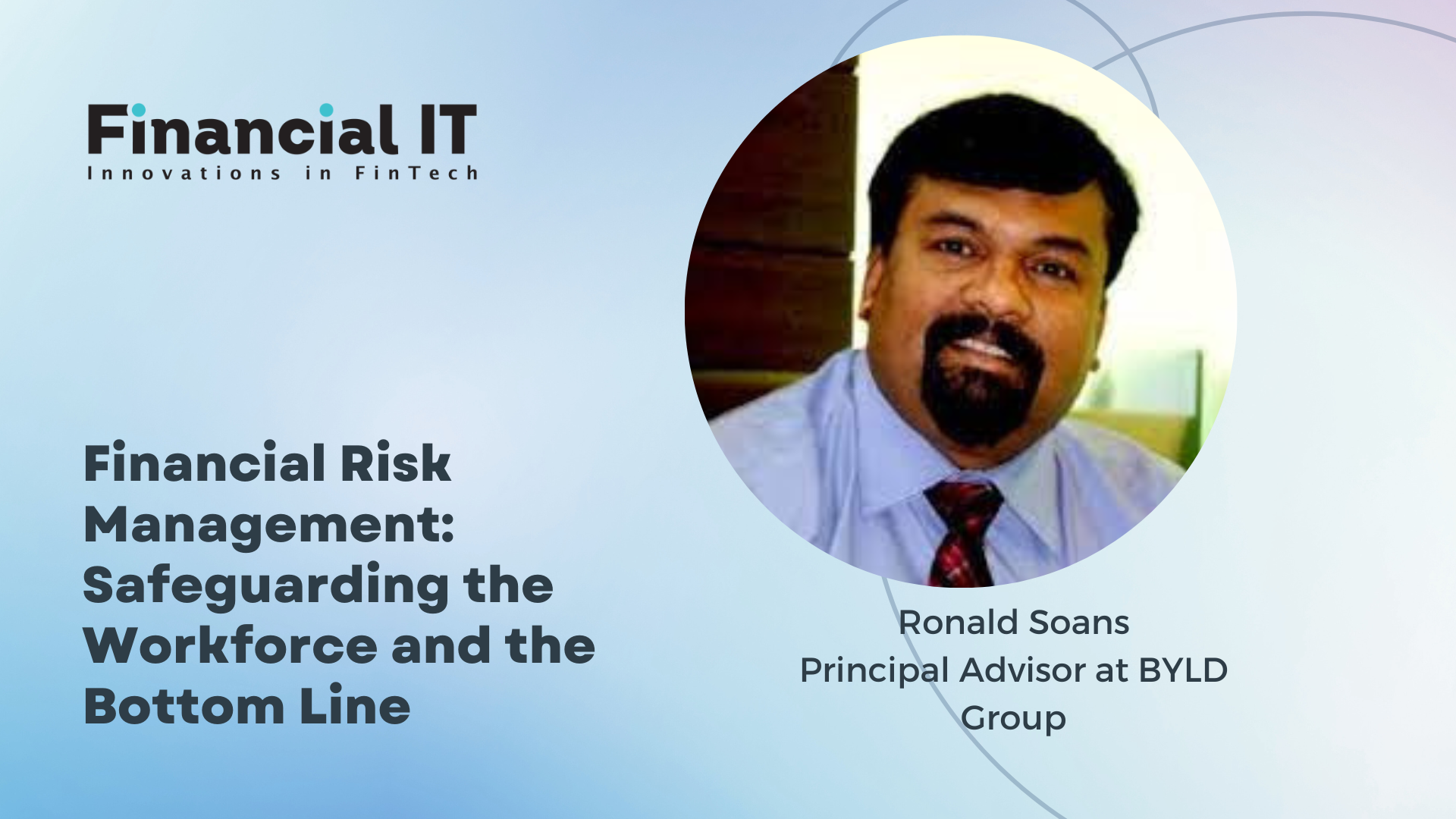Financial Risk Management: Safeguarding the Workforce and the Bottom Line

- Ronald Soans, Principal Advisor at BYLD Group
- 22.08.2023 09:30 am #RiskManagement
Financial risk management is a multidimensional endeavour that requires collaboration and engagement from various departments within an organisation. HR's role in this process extends beyond safeguarding the workforce's well-being; it also significantly impacts the bottom line. HR professionals play a crucial role in ensuring the financial stability and success of an organization by actively addressing compliance, employee benefits, and compensation risks.
HR can also facilitate educating all the employees in financial risk management at the personal level and also at a professional level by building skills in financial management and some business acumen to be able to take calculated risks while taking business decisions.
Compliance Risk Management:
Organizations face significant financial risk when they do not comply with regulations and laws related to employment practices. This phenomenon is known as compliance risk, which refers to the possibility of violating laws, regulations, or industry standards that may result in financial penalties, lawsuits, or reputational harm. HR professionals should work closely with legal and compliance teams to establish and maintain strong policies and procedures that align with all applicable laws and regulations. HR plays a critical role in minimizing these risks by:
a) Keeping Up-to-date: HR professionals must stay informed about the latest changes in labour laws and regulatory requirements to ensure that the company complies with them.
b) Formulating Policies and Procedures: HR must create comprehensive policies and procedures that align with regulatory guidelines to guide employees and managers in making compliant decisions.
c) Training and Education: Regular training sessions for employees and managers raise awareness of compliance issues and foster a culture of adherence.
d) Monitoring and Auditing: Regular monitoring and audits of HR practices ensure that compliance is maintained and identify any areas that need improvement.
Employee Benefits Risk Management:
Employee benefits are an essential aspect of attracting and retaining top talent, but they can also be a significant expense for organizations. By regularly reviewing and benchmarking benefit packages, HR can ensure that the benefits offered are attractive to employees while remaining cost-effective for the company. Additionally, conducting due diligence on benefit providers can help prevent potential financial risks associated with unreliable or financially unstable vendors. They can reduce risk by:
a) Cost-Benefit Analysis: Evaluating the cost-effectiveness of each benefit offered and identifying areas where adjustments can be made to control expenses. You can offer a multitude of small, small benefits in the same cost and the employees value the basket instead of some singular benefit.
b) Benchmarking: Comparing the company's benefit offerings with industry standards helps ensure competitiveness while managing costs. Also sometimes the perception of the brand matters, how good the brand associated with the benefit is seen is more meaningful than the actual transference of the benefit
c) Communication: Transparently communicating benefit changes and the overall value of the benefits package to employees can help manage expectations and minimize dissatisfaction. It may be a good idea to do an internal survey and find out among the list of initiatives what is more meaningful for your employees.
d) Wellness Programs: Implementing wellness initiatives can enhance employee health and reduce long-term benefit costs associated with healthcare claims. It can also increase productivity and engagement due to high energy levels and feelings of positivity.
Effective Compensation Risk Management:
Compensation is a crucial element in motivating employees and driving organizational success. However, poorly managed compensation practices can pose financial risks, such as overcompensation and under-compensation. HR plays a key role in addressing these risks by conducting market analyses to set competitive salary structures. Performance-based pay systems can also align employee incentives with the company's financial objectives, rewarding top performers while keeping compensation-related expenses in check.
To mitigate compensation risks, HR can take the following steps:
a) Conducting Market Research: Regular market salary surveys can ensure that the company's compensation packages are competitive and in line with industry standards.
b) Implementing Performance-based Pay: By implementing performance-based pay systems that reward employees based on individual and company achievements, HR can enhance motivation and productivity.
c) Ensuring Pay Equity: HR can review pay practices regularly to identify and address wage disparities based on gender, race, or other protected characteristics.
d) Maintaining Legal Compliance: HR should ensure that compensation practices comply with local laws and regulations to avoid potential legal liabilities.
On the whole, incorporating HR into financial risk management strategies is vital for safeguarding both the workforce and the organization's bottom line. By focusing on compliance, employee benefits, and compensation risks, HR professionals can contribute significantly to the company's long-term success. A proactive and well-structured risk management approach empowers HR to create a resilient and compliant work environment, fostering employee loyalty and financial stability for the organization.


























